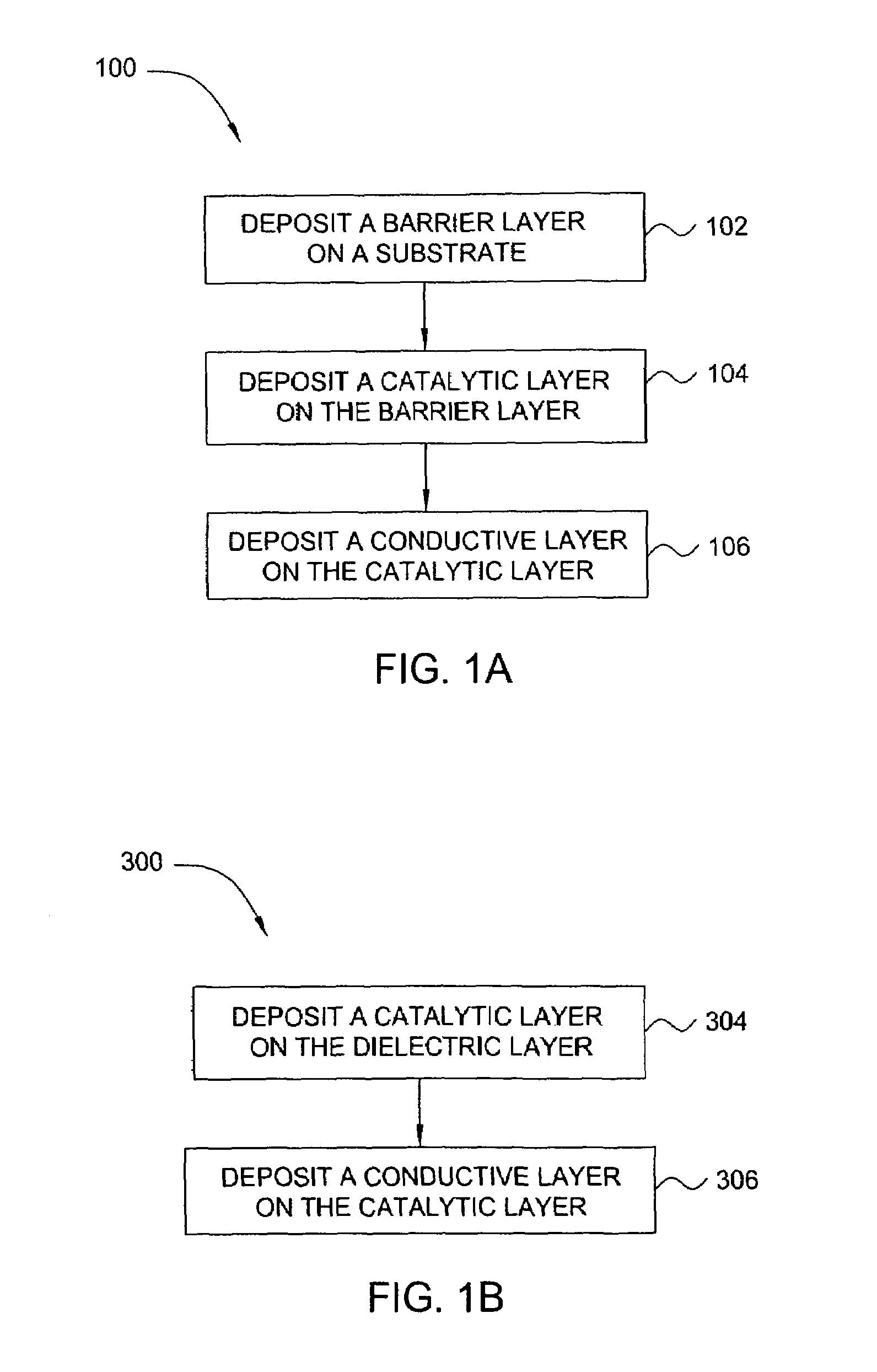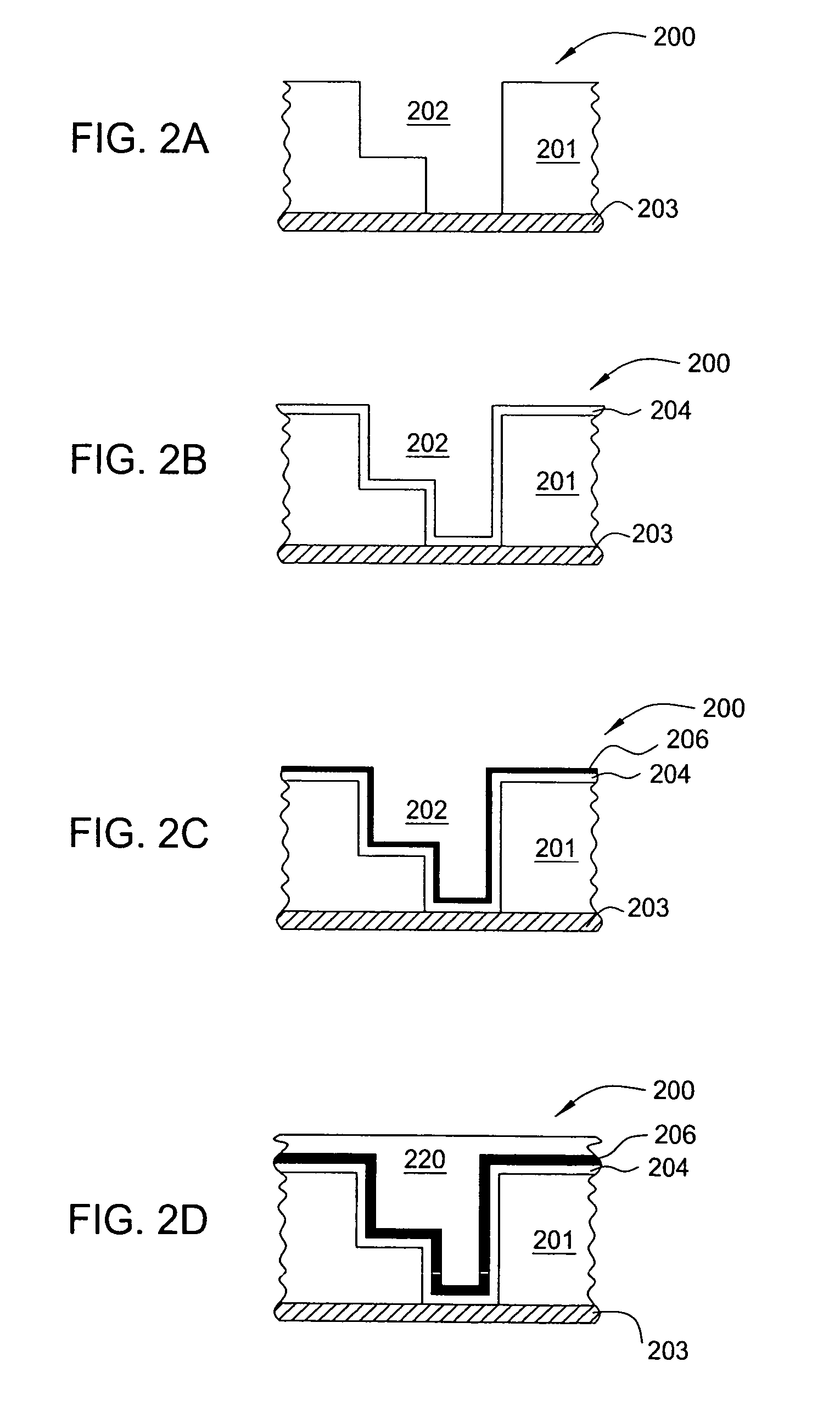Ruthenium containing layer deposition method
a technology of ruthenium containing and layer deposition, which is applied in the direction of coating, chemical vapor deposition coating, metallic material coating process, etc., can solve the problems of dielectric layer becoming conductive, copper diffusing into neighboring layers, and electronic devices failing to work properly
- Summary
- Abstract
- Description
- Claims
- Application Information
AI Technical Summary
Benefits of technology
Problems solved by technology
Method used
Image
Examples
Embodiment Construction
[0032]A method and apparatus for depositing a ruthenium containing layer on a substrate is generally disclosed. The method and apparatus described herein may be especially useful for fabricating electronic devices that are formed on a surface of the substrate or wafer. Generally, the method includes exposing a surface of a substrate to a ruthenium tetroxide vapor to form a catalytic layer on the surface of a substrate and then filling the device structures by an electroless, electroplating, physical vapor deposition (PVD), chemical vapor deposition (CVD), plasma enhanced CVD (PECVD), atomic layer deposition (ALD) or plasma enhanced ALD (PE-ALD) processes. In one aspect, the catalytic layer is a ruthenium containing layer that is adapted to act as a layer that can promote the adhesion between prior and subsequently deposited layers, act as a barrier layer or act as a catalytic layer to promote subsequent PVD, CVD, PECVD, ALD, PE-ALD, electroless and / or electrolytic deposition process...
PUM
| Property | Measurement | Unit |
|---|---|---|
| temperature | aaaaa | aaaaa |
| temperature | aaaaa | aaaaa |
| temperature | aaaaa | aaaaa |
Abstract
Description
Claims
Application Information
 Login to View More
Login to View More - R&D
- Intellectual Property
- Life Sciences
- Materials
- Tech Scout
- Unparalleled Data Quality
- Higher Quality Content
- 60% Fewer Hallucinations
Browse by: Latest US Patents, China's latest patents, Technical Efficacy Thesaurus, Application Domain, Technology Topic, Popular Technical Reports.
© 2025 PatSnap. All rights reserved.Legal|Privacy policy|Modern Slavery Act Transparency Statement|Sitemap|About US| Contact US: help@patsnap.com



